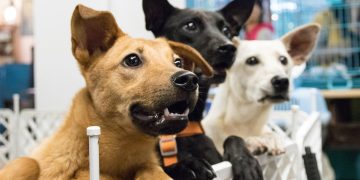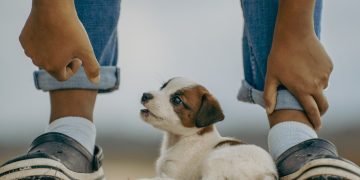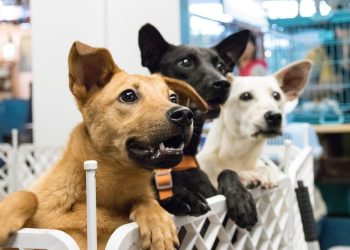Pet obesity is a growing concern worldwide, with many pets suffering from weight-related health issues. Just like in humans, excessive weight in pets can lead to serious health complications, reduced mobility, and a shorter lifespan. Preventing obesity is a critical aspect of responsible pet ownership, and with proper care, you can ensure your pet stays healthy, active, and happy. This guide outlines effective strategies for preventing obesity in pets, helping them maintain an ideal weight throughout their lives.
Understanding Pet Obesity
What is Obesity in Pets?
Obesity in pets occurs when a pet’s weight exceeds 20% of their ideal body weight due to excessive fat accumulation. This condition is typically caused by an imbalance between calorie intake and energy expenditure.
Health Risks Associated with Obesity
- Joint Problems: Excess weight puts additional strain on joints, leading to conditions like arthritis and hip dysplasia.
- Diabetes: Overweight pets are at a higher risk of developing diabetes.
- Heart Disease: Obesity can lead to high blood pressure and increased stress on the heart.
- Shortened Lifespan: Obesity reduces a pet’s overall quality of life and longevity.
Causes of Pet Obesity
Overfeeding
- Providing larger portions than necessary is a common cause of weight gain in pets.
- Frequent treats and table scraps add unnecessary calories to their diet.
Lack of Exercise
- Sedentary lifestyles lead to reduced calorie expenditure.
- Indoor pets, in particular, may not get enough physical activity to stay fit.
Poor Diet
- Feeding pets low-quality food high in fats, carbohydrates, and fillers contributes to weight gain.
- Free-feeding or leaving food available all day can lead to overeating.
Medical Conditions
- Hypothyroidism, Cushing’s disease, and other hormonal imbalances can contribute to obesity.
- Medications, such as steroids, may also lead to weight gain.
Recognizing Obesity in Pets
Body Condition Scoring
- A Body Condition Score (BCS) is used to assess a pet’s weight:
- Ideal: Ribs are easily felt, a visible waist is present, and there’s a slight abdominal tuck.
- Overweight: Ribs are difficult to feel, and the waist is less defined.
- Obese: Ribs are not palpable, the waist is absent, and there’s noticeable fat accumulation.
Behavioral Indicators
- Reduced energy levels and reluctance to play or exercise.
- Difficulty breathing or panting excessively during light activity.
Preventing Obesity
Proper Nutrition
Portion Control
- Follow the feeding guidelines on pet food packaging and adjust portions based on your pet’s age, size, and activity level.
- Use a measuring cup to ensure consistent portion sizes.
High-Quality Diet
- Choose nutritionally balanced food with appropriate protein, fat, and carbohydrate levels.
- Consult your veterinarian for recommendations on the best diet for your pet’s needs.
Limit Treats
- Treats should make up no more than 10% of your pet’s daily caloric intake.
- Opt for healthy treat options like carrot sticks, apple slices (without seeds), or specially formulated low-calorie treats.
Regular Exercise
Daily Activity
- Dogs benefit from daily walks, runs, or play sessions that match their energy levels.
- Cats enjoy interactive toys, laser pointers, and climbing structures to encourage movement.
Mental Stimulation
- Provide puzzle feeders or toys to engage your pet’s mind while keeping them active.
- Rotate toys regularly to maintain interest.
Playtime
- Dedicate time each day for play to strengthen your bond and keep your pet active.
Routine Health Checks
Veterinary Visits
- Schedule regular checkups to monitor your pet’s weight and overall health.
- Your vet can identify underlying health issues contributing to weight gain.
Monitor Progress
- Keep track of your pet’s weight and body condition over time.
- Use a journal or app to log meals, treats, and exercise.
Adjusting for Life Stages
Puppies and Kittens
- Young pets need a nutrient-dense diet to support growth, but portion control is still essential.
- Encourage play to develop healthy exercise habits early.
Adult Pets
- Maintain a consistent feeding and exercise routine to prevent gradual weight gain.
- Adjust calorie intake based on activity level and age.
Senior Pets
- Older pets may require fewer calories due to reduced activity levels.
- Focus on joint-friendly exercises like swimming or gentle walks.
Special Considerations
Spayed/Neutered Pets
- Pets often experience a slight reduction in metabolism after being spayed or neutered.
- Adjust calorie intake and increase exercise to prevent weight gain.
Breed-Specific Risks
- Certain breeds, such as Labrador Retrievers, Dachshunds, and Persian cats, are more prone to obesity.
- Be proactive with diet and exercise for breeds at higher risk.
Multi-Pet Households
- Monitor feeding times to prevent one pet from eating another’s food.
- Use separate bowls and feeding areas if needed.
Managing Weight Loss for Overweight Pets
Gradual Changes
- Reduce calorie intake gradually to avoid health issues associated with rapid weight loss.
- Increase exercise slowly to build stamina and avoid injury.
Veterinary-Supervised Plans
- Work with your vet to create a customized weight-loss plan.
- Prescription diets or weight-management foods may be recommended.
Celebrate Small Wins
- Reward progress with non-food items, such as toys or extra playtime.
- Acknowledge milestones to stay motivated.
Creating a Long-Term Plan
Consistency is Key
- Stick to the routines you establish for feeding, exercise, and health monitoring.
- Involve all family members to ensure everyone follows the same guidelines.
Educate Yourself
- Learn about your pet’s specific nutritional and exercise needs.
- Stay informed about new products or strategies for maintaining pet health.
Regular Reassessments
- Reevaluate your pet’s diet and activity level periodically.
- Adjust routines as needed to accommodate changes in age, health, or lifestyle.
Preventing obesity in pets requires a proactive approach, but the rewards are well worth the effort. By focusing on proper nutrition, regular exercise, and routine health checks, you can ensure your pet remains healthy and vibrant. A healthy weight not only extends your pet’s life but also enhances their quality of life, allowing you to enjoy more happy, active years together.












